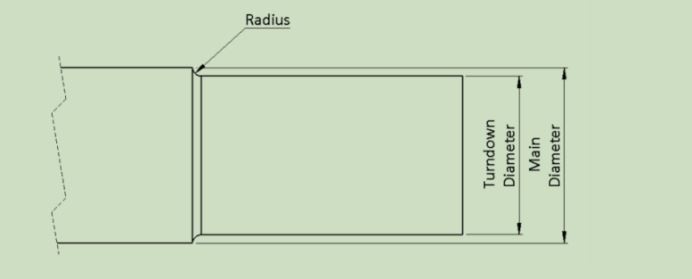 Afrikaans
Afrikaans  Albanian
Albanian  Amharic
Amharic  Arabic
Arabic  Armenian
Armenian  Azerbaijani
Azerbaijani  Basque
Basque  Belarusian
Belarusian  Bengali
Bengali  Bosnian
Bosnian  Bulgarian
Bulgarian  Catalan
Catalan  Cebuano
Cebuano  Corsican
Corsican  Croatian
Croatian  Czech
Czech  Danish
Danish  Dutch
Dutch  English
English  Esperanto
Esperanto  Estonian
Estonian  Finnish
Finnish  French
French  Frisian
Frisian  Galician
Galician  Georgian
Georgian  German
German  Greek
Greek  Gujarati
Gujarati  Haitian Creole
Haitian Creole  hausa
hausa  hawaiian
hawaiian  Hebrew
Hebrew  Hindi
Hindi  Miao
Miao  Hungarian
Hungarian  Icelandic
Icelandic  igbo
igbo  Indonesian
Indonesian  irish
irish  Italian
Italian  Japanese
Japanese  Javanese
Javanese  Kannada
Kannada  kazakh
kazakh  Khmer
Khmer  Rwandese
Rwandese  Korean
Korean  Kurdish
Kurdish  Kyrgyz
Kyrgyz  Lao
Lao  Latin
Latin  Latvian
Latvian  Lithuanian
Lithuanian  Luxembourgish
Luxembourgish  Macedonian
Macedonian  Malgashi
Malgashi  Malay
Malay  Malayalam
Malayalam  Maltese
Maltese  Maori
Maori  Marathi
Marathi  Mongolian
Mongolian  Myanmar
Myanmar  Nepali
Nepali  Norwegian
Norwegian  Norwegian
Norwegian  Occitan
Occitan  Pashto
Pashto  Persian
Persian  Polish
Polish  Portuguese
Portuguese  Punjabi
Punjabi  Romanian
Romanian  Russian
Russian  Samoan
Samoan  Scottish Gaelic
Scottish Gaelic  Serbian
Serbian  Sesotho
Sesotho  Shona
Shona  Sindhi
Sindhi  Sinhala
Sinhala  Slovak
Slovak  Slovenian
Slovenian  Somali
Somali  Spanish
Spanish  Sundanese
Sundanese  Swahili
Swahili  Swedish
Swedish  Tagalog
Tagalog  Tajik
Tajik  Tamil
Tamil  Tatar
Tatar  Telugu
Telugu  Thai
Thai  Turkish
Turkish  Turkmen
Turkmen  Ukrainian
Ukrainian  Urdu
Urdu  Uighur
Uighur  Uzbek
Uzbek  Vietnamese
Vietnamese  Welsh
Welsh  Bantu
Bantu  Yiddish
Yiddish  Yoruba
Yoruba  Zulu
Zulu Optimal Idler Rollers for Efficient Belt Conveyor Systems Design and Performance
Idler Rollers for Belt Conveyors An Essential Component for Efficiency and Reliability
Belt conveyors are among the most versatile and efficient systems for transporting materials across various industries, including mining, construction, and manufacturing. One of the pivotal components of these systems is the idler roller. Idler rollers are crucial for supporting the conveyor belt as it carries materials from one point to another, ensuring that the system operates smoothly and reliably.
What Are Idler Rollers?
Idler rollers are cylindrical devices that are mounted on the frames of belt conveyors. Their primary function is to support the conveyor belt during its operation, allowing it to maintain proper alignment and tension. Idler rollers reduce friction between the belt and the supporting structure, thus improving the overall efficiency of the conveyor system. These rollers come in various types, including flat, trough, and impact rollers, each designed for specific applications and material types.
Types of Idler Rollers
1. Flat Idlers These are simple cylindrical rollers that provide a flat surface for the belt to run smoothly. They are typically used in applications where the conveyor belt has a consistent load and does not need to be cupped or shaped.
2. Trough Idlers Designed to create a trough shape, these idler rollers are essential for transporting bulk materials. They help contain the materials on the belt and prevent spillage, making them ideal for applications like coal, minerals, or grains.
3. Impact Idlers These are specifically designed to absorb the energy caused by material falling onto the belt. Located at loading points, impact idlers reduce the risk of damage to the belt and extend its lifespan.
4. Return Rollers Positioned on the return side of the conveyor, these rollers support the belt as it returns to the loading point. They help maintain tension and alignment, ensuring efficient operation.
Importance of Idler Rollers
idler rollers for belt conveyors

The performance of a belt conveyor heavily depends on the quality and design of its idler rollers. Poorly designed or malfunctioning idlers can lead to several issues, including belt misalignment, excessive wear, and increased energy consumption. Here are some reasons why idler rollers are essential for conveyor systems
1. Enhanced Efficiency Properly functioning idler rollers significantly reduce friction and resistance, allowing the conveyor belt to operate at optimal efficiency. This translates to lower energy costs and increased throughput.
2. Increased Lifespan of Components By supporting the belt and minimizing wear and tear, idler rollers extend the life of the conveyor belt and other associated equipment. This helps reduce maintenance costs and minimizes downtime.
3. Safety and Reliability Well-maintained idler rollers help ensure the safe and reliable operation of conveyor systems. They prevent accidents caused by belt slippage or misalignment, protecting both personnel and equipment.
4. Customizability Idler rollers can be customized based on the specific needs of the application, including material type, load capacity, and environmental conditions. This flexibility allows for efficient operation across diverse industrial settings.
Maintenance and Care
To ensure the longevity and efficiency of idler rollers, regular maintenance is essential. This includes inspecting for wear and tear, lubricating moving parts, and ensuring proper alignment. Any signs of damage or misalignment should be addressed promptly to prevent further issues down the line.
Conclusion
Idler rollers are an indispensable component of belt conveyors, playing a vital role in ensuring their efficiency, reliability, and lifespan. Investing in high-quality idler rollers and maintaining them properly can lead to significant operational benefits, reducing costs and improving productivity. As industries continue to evolve, the importance of these small yet mighty components in the transportation of materials remains ever crucial.
-
Revolutionizing Conveyor Reliability with Advanced Rubber Lagging PulleysNewsJul.22,2025
-
Powering Precision and Durability with Expert Manufacturers of Conveyor ComponentsNewsJul.22,2025
-
Optimizing Conveyor Systems with Advanced Conveyor AccessoriesNewsJul.22,2025
-
Maximize Conveyor Efficiency with Quality Conveyor Idler PulleysNewsJul.22,2025
-
Future-Proof Your Conveyor System with High-Performance Polyurethane RollerNewsJul.22,2025
-
Driving Efficiency Forward with Quality Idlers and RollersNewsJul.22,2025





























